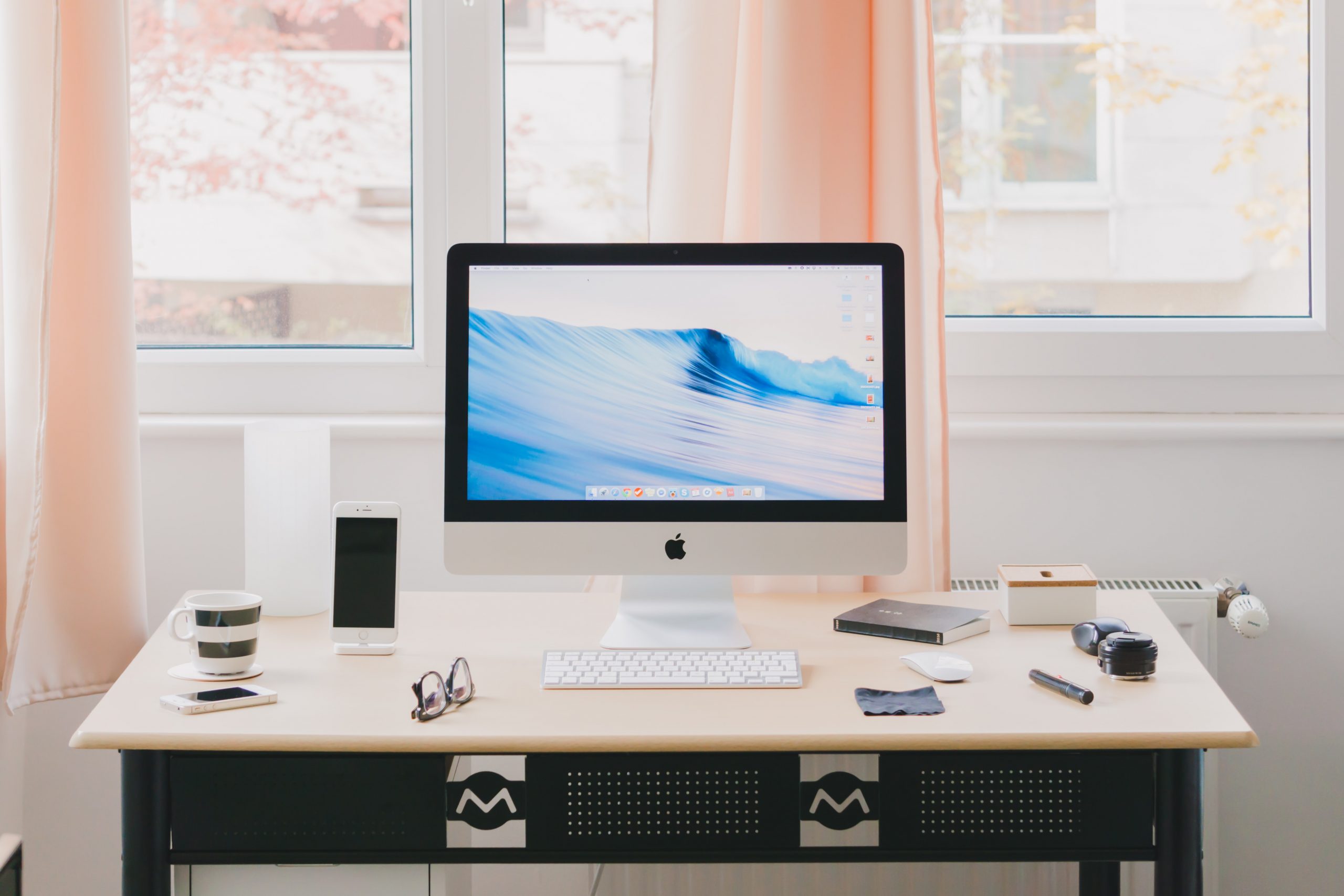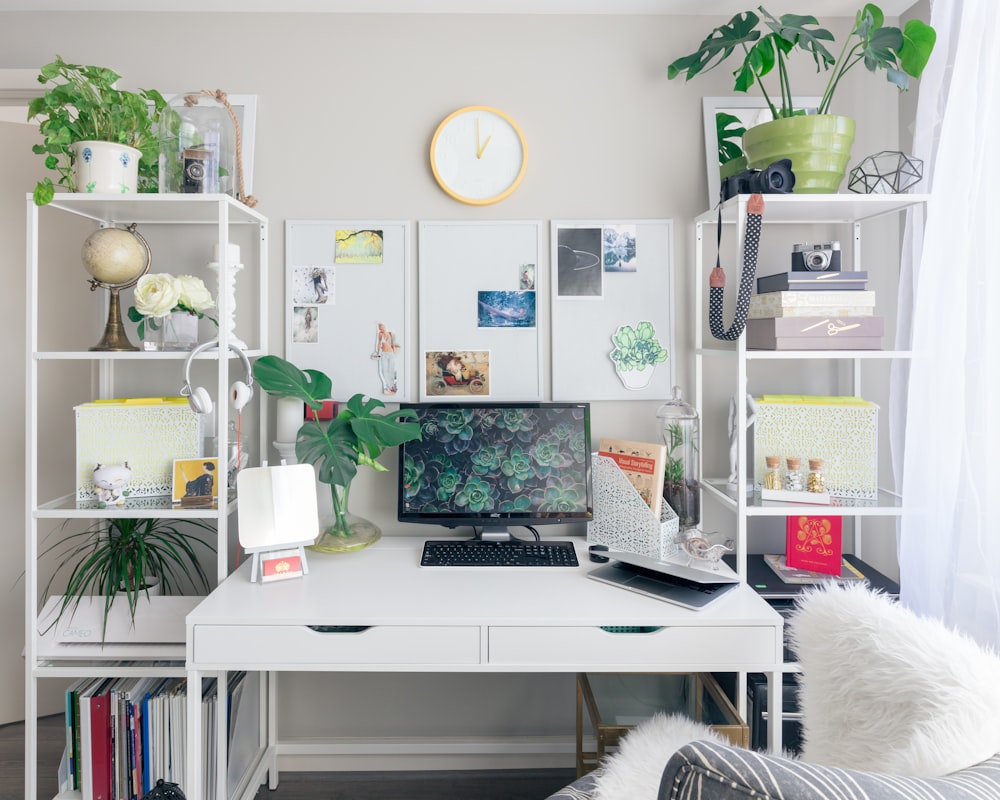Due to the coronavirus outbreak, many universities and schools have transitioned from in-person classes to remote instruction. But that doesn’t mean the transition has been easy. Although it seems like studying at home should be easier, most students have found it has its own unique difficulties.
Trying to complete your classes and coursework at home is quite different from studying in a dedicated classroom, and some tried-and-true study tips you’re used to might not work as well when you’re hanging at the house, especially if there are others around.
To help you manage this huge (and surprisingly inconvenient) adjustment, we’ve put together a few tips on creating a space that can make studying at home a little easier.
Building a Home Study Space
One of the pitfalls of online education is that you don’t have convenient access to dedicated study spaces. Brick-and-mortar schools and universities offer libraries and computer labs, not to mention rarely traveled nooks and crannies, which you can hide away in for some much needed studying time.
When you’re involved in online education, your home is the entire university. Unless you have an uncommon level of focus, you will need to build yourself a study space. Here’s how:
1. Pick a Good Spot
If you already work at home, this simplifies things enormously. The main challenges are physically organizing the space and — if the other household members also need to use the office—working out a time share. If you don’t have a home office or cannot repurpose a room to serve as one, you need to get creative.
Try to pick a place that is away from the center of activity. It’s best to avoid the living room, unless you live alone, as people tend to congregate in that space. Your bedroom may very well be the only option. If you have a spouse or significant other sharing your bedroom, make sure to discuss setting up a study space in the bedroom, since you may find it necessary to put in some late nights.
2. Establish Privacy
To create the necessary level of focus and attention you need, you require privacy. To retain information from your reading and do your coursework, it is best if you can be alone. The easiest way to create privacy is to set up your study space in a room with a door, as a closed door discourages interruptions.
If this isn’t an option, you can use room dividers to portion off a section of the room. Room dividers create a physical and perceptual wall for both you and other people. They cut off visual distractions and can help to diminish some noise.
3. Install Good Lighting
Insufficient light in your study space can lead to eyestrain and bring on headaches. Setting up your study space near a window can let you take advantage of natural light during the day. A good desk lamp or overhead lighting can also help.
Several companies also make lamps that produce the same spectrum of light as natural light. Some manufacturers claim that these lights increase productivity. We’re not sure about that, but they do provide less taxing lighting conditions in terms of reduced glare and improved visual acuity.
4. Accessorize Your Space
As a rule, you want to minimize the distractions in your study space. So, for example, you’d probably want to avoid having a toy or game on your desk. The right accessories, however, can actually prove helpful.
You could hang an inspirational phrase or a picture of a place you intend to visit during vacation or after graduating. These types of decorations can act as motivators on days when things don’t go well, or you find the work particularly challenging.
Props like scented candles and essential oil diffusers can also help create a more peaceful environment and reduce stress.
5. Get Organized
A disorderly workspace isn’t merely inefficient; it can inhibit productivity and have a negative impact on your state of mind. You don’t need to color-code your work or slap a barcode on everything, but it is vital to develop a system that lets you access resources quickly and find your coursework when you need it.
This applies as much to your computer desktop as it does to your physical workspace. Taking an extra few minutes when you finish school to organize your study space leaves you positioned to jump right in the next day.
6. Find a Good Chair
You’ll be spending a lot of hours in your study space throughout your online education. The last thing you need is a chair that leaves your back hurting, positions your hands for repetitive stress injuries, or makes you hunch over your desk.
An adjustable chair lets you position yourself at eye-level with the computer screen, reducing neck and shoulder tension from craning to get the right angle. It also supports proper posture.
7. Deal With Unwanted Noise
If you cannot avoid setting up your workspace in an area with a lot of noise, music can help drown out those auditory distractions.
One way to take this to the next level is with noise-canceling headphones or earbuds. You can plug them directly into your computer, listen to music, or even just queue up a white-noise generator. This can help you stay in the zone while you work in your study space.
If there are young kids at home, these items can be a lifesaver for both studying and working.
8. Create Some Rules For Yourself
At first, studying at home may feel like a reprieve from rigid schedules, hall passes, or roll calls. But after a while, things can get monotonous. Going from your bed to your study space to the kitchen and back again day after day is maddening.
Impose some boundaries on yourself to break things up a bit. If you don’t already have a set schedule, establish a specific time to start and end class. But before you begin, behave as though you were leaving the house for school.
Take a shower (or at least brush your teeth and throw a comb across your hair), get out of your pajamas, and put on some real clothes. Have breakfast. Take a morning walk. Do whatever it takes to create an invisible boundary between activities. If you don’t, you may find yourself getting burned out quickly.
9. Shake up the Routine
If you’re sharing your study space with another person, swap time slots once a week for a new perspective. Team up with new study partners on Zoom and get to know some people you usually don’t cross paths with. Look up some unfamiliar learning resources or tools and try them out for fun.
10. Move Around
At a physical campus, you are switching classes, traveling between buildings, climbing stairs, walking across the grounds, and passively participating in exercise without even realizing it. After a few weeks at home, you might start to feel tired and lethargic even though you’re barely doing anything. But that’s just it. Your fatigue is likely coming from a lack of activity.
To counter this, start moving more. Set the alarm to go off every 45 minutes. Get up from your chair, do some stretches, do a few minutes of yoga, or do a few laps around the house. Climb the stairs a couple of times, take the dog for a walk, or jog in place. Physical movement benefits your body but can also clear your head and make attending to your studies easier.
Final Thoughts
You may need to modify your plan over time, so stay flexible. You will probably discover more efficient ways of studying at home as time goes on. If you’re a homebody and love studying at home, you may love the idea of working from home too. You can take high paying surveys with us and stay perfectly comfortable in bed, on your couch, or in your new home study space. This is an easy way to make extra money for schoolbooks or that cup of coffee you love to get on your break.
Building yourself a study space goes a long way toward forwarding your online education. It gives you somewhere to retreat from your home life and focus on school exclusively. It also serves as a psychological cue for your mind to drop into school mode while creating a physical and mental barrier to discourage others from interrupting.
You might also like: Working From Home: How to Setup a Home Office












